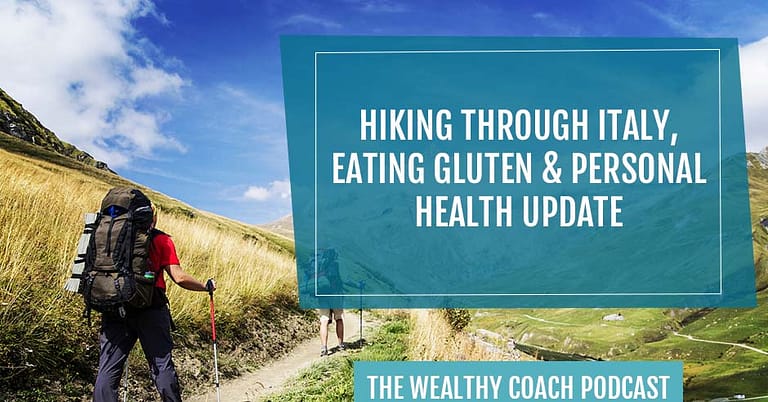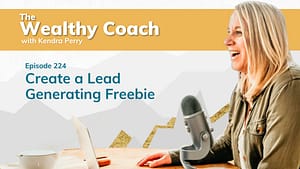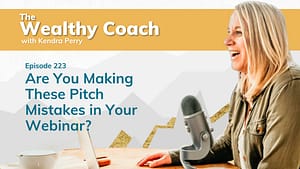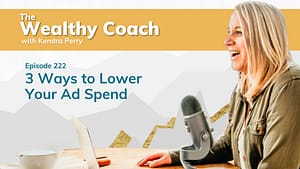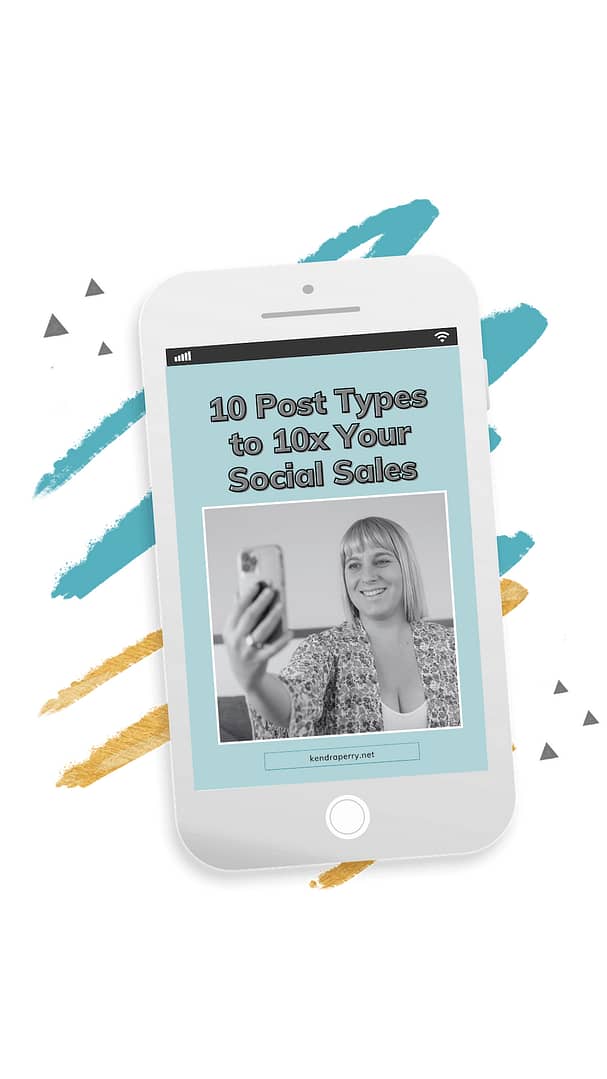Episode after episode, we get to hear about the incredible health journeys of our wonderful guests. But what does our very own host, Kendra Perry, do for her own health? We find out in this episode! Join us to get updates about Kendra’s life and her personal health journey. Not only that, she takes us through the three weeks she spent hiking in Italy. She unearths some great nuggets that helped her prepare for her travels as well as the wisdom she learned along the way. How did she fight jet lag? Where are the must-see places? How did she manage to go on vacation while still earning? Kendra spills the answers and more! Plus, she also talks about eating gluten in Italy, despite being gluten-free for about a decade. What happened? How did she cope? Tune in to find out!
Italy itinerary, hotels & restaurants: https://kendraperry.net/italy
Temperature Min Jet Lag protocol: https://www.med.upenn.edu/cbti/assets/user-content/documents/Burgess_UsingBrightLightandMelatonintoReduceJetLag.pdf
Continuous Blood Sugar Monitor (Canada): https://diabetesexpress.ca/collections/freestyle-libre-sensor/products/freestyle-libre-2-sensor
H.pylori Toxaprevent Protocol: https://www.toxaprevent.co.uk/products/h-pylori-health-pack
—
Listen to the podcast here
Hiking Through Italy, Eating Gluten & Personal Health Update
I am excited to be with you here. I’ve been getting a lot of personal questions. I always get a lot of personal questions. I thought I’d use this episode to update you on my trip to Italy, what’s going on in my life, and what’s going on with my health. You guys are health coaches and you seem to always be wondering what I’m doing for my own health.
If you don’t give a crap about me, my life, and my personal stuff, then it’s probably not the episode for you, but I promise that all my other episodes are very actionable. It will help you with your business and all that good stuff. Check out the other episodes if this is your first episode and you’re like, “I don’t even know you. I don’t care about your life.”
I got back from three weeks in Italy. We were mostly there to hike. Honestly, I had the best time. It was my first time going to Europe. I’ve never been to Europe before. I’ve never gone east to travel other than Ontario, which is where I grew up. It is about maybe a four-hour plane ride east, but I’d never gone outside of North America East. Every time I travel, I always go south to the States or South America or I go West to Australia, New Zealand, Indonesia, Asia, and that sort of thing. This was different.
I did a lot of traveling in my twenties. I always felt about Europe, “I’ll do that when I’m older and wealthy.” Apparently, I’m older and wealthy. That’s why I went to Europe. Although I have to say Italy was way more inexpensive than I thought, which was a nice surprise. It was not too bad, considering. We spent about the same amount on food eating out three meals a day in Italy than we would in Canada to buy groceries because the inflation situation here is so insane. It was as affordable to eat out. We were pigging out. We weren’t being skimpy with our meals. We were trying all the things.
Phase Advancing: Fighting Jet Lag In Rome
I talked about this a little bit when I was leaving on the front end of my trip and there were a few questions about it. I’ve had some bad times with jet lag in my life. Notably, one time, I didn’t do well with jet lag when I went to Bali in 2019. Coming home, it took me almost four weeks to recover. Since we were only going to Italy for three weeks, I wanted to make sure that I adapted quickly.
I have to shout out my friend Elise for this because she turned me onto this. I remember one day we were skiing this winter together. We were talking about Andrew Huberman. She was like, “Do you know your temperature minimum?” I was like, “What are you talking about?” She’s like, “Your temperature minimum? Do you not know that?” She told me about this podcast episode that she’d listened to from Andrew Huberman all about the temperature minimum, your circadian rhythm, and how you can manipulate it to adapt to jet lag quicker.
It was in the back of my mind and I was like, “I’m going to listen to this closer when we’re going to Italy because I don’t want to feel like crap my entire trip.” I listened to the episode. I did a little bit of research. It took a little bit to wrap my head around but I figured it out. We did this protocol and were able to recover from jet lag in 48 hours. Based on how long you would typically adapt, it should have taken us five days. It was fast. We felt good quickly. I’m going to share that with you because you might be interested.
If you didn’t know, your temperature minimum is the lowest temperature of your body in a 24-hour cycle. It typically happens about 90 minutes to 2 hours before you wake up in the morning. Your whole circadian rhythm is very much based on that. The important time for your circadian rhythm, if you’re wanting to shift things forward or backward, is the 4 hours leading up to your temperature minimum and the 4 hours after your temperature minimum. Outside of that, Andrew Huberman calls it a circadian rhythm dead zone. Even if you expose yourself to light or dark, it’s not going to impact your circadian rhythm because the most important time is that time or those eight hours around your temperature minimum.
Since we were going East, we wanted to do something called phase advance. We wanted to advance our circadian rhythm versus if we were going West, we wanted to phase delay. We wanted to phase advance. When we were phase advancing, what we needed to do is slowly make our temperature minimum earlier. That would help set us up for success when we got to the new destination.
We typically get up around 6:30 naturally. In the four days leading up to our flight, we started getting up earlier. We pushed it back by 30 minutes. When you wake up, you’re supposed to expose yourself to light immediately. You can then do something like a workout or eat a big meal because we’re trying to start heating up the body temperature a little bit earlier each day. That makes us go to sleep a little bit earlier. What that does is it shifts back your temperature minimum.
As that got earlier, we were getting up at 5:00 in the morning and then 4:30. It was still dark out. I have a little light box or a little satellite. We were sitting in front of that. We were drinking coffee and eating a big meal. On the day of our flight, we got up at 3:30 in the morning even though our flight didn’t leave until noon. We were going to bed pretty early so we were still getting lots of sleep.
Once you shifted back your temperature minimum, you need to keep track of that time. I downloaded a little world clock app so I could keep track of what time it was at home. You really need to know what your temperature minimum is at home. We had started getting up at 3:30 in the morning, so that meant that our temperature minim was about 2:00 AM. We had to keep track of that 2:00 AM.
This is only for phase advancing and it would be different if you’re phase delaying. When you arrive in the new location, you want to do is avoid light in the four hours leading up to your temperature minimum, which is 2:00 AM Pacific time. We want to expose ourselves to light for four hours after the temperature minimum, which is still 2:00 AM.
When you’re trying to heat up your body temperature, what are other things you can do? You could do a workout. We decided we were probably not going to exercise because we were staying in little boutique hotels. There was no workout room. We were not going to go for a jog around Rome or whatever. We decided to use food. We would eat. As soon as that time came, we would expose ourselves to light. The other thing you can do is have a cold shower. I know that’s counterintuitive. You’re like, “Doesn’t a cold shower reduce your body temperature?” No. It does the opposite because when you cool yourself down, your body overcompensates and wants to heat itself up.

It worked out pretty well because at 2:00 AM Pacific time, it was 11:00 AM in Rome, Italy. We landed at about 9:30 AM. In those four hours leading up to 11:00 AM, we wore our blue-blocking glasses and tried to refrain from eating. We were those super nerdy weirdos on the plane with our orange sunglasses. We didn’t care.
It worked out well because as soon as we got to our accommodation, it was 11:00 AM. That’s when we took everything off. We walked outside. We had a big meal and had a cold shower at the hotel. We did that for one day. We were slowly shifting our circadian rhythm in the days leading up. We were preparing so that by the time we got to Rome, we weren’t nine hours behind. We were a lot less because we shifted by about three hours. That was really good.
We did sleep a little bit on the plane. We didn’t feel too bad in Rome. In Rome, we did a lot of walking. We saw all the sites. We didn’t do any tours or anything. We were not tour people, but we went and saw the Colosseum and the Pantheon. We saw the Vatican by accident. We weren’t planning to go see the Vatican, but we were walking all over Rome. All of a sudden, we’re like, “Look at that building. That’s a pretty beautiful building. What is that? There are a lot of people here.” We’re then like, “It’s the Vatican.”
We ended up seeing the Vatican but we didn’t go inside. It would’ve been cool to go inside. There was a crazy line. Apparently, you can pay for getting in earlier and stuff like that. I’m not a tour person. I’m not a crowd person. Maybe Ryan would’ve been more excited to go inside. I’m not into museums and cultural things. It was cool to see these things. It was amazing, but I was pretty complete by looking at everything from the outside.
Rome was pretty great for eating. We ate so much good food. We had those two days in Rome where we were a little bit off. By the third day, we felt pretty good. We were fine. We adapted quickly. On the way home, because we had less control over our environment and were like, “We’re going home,” we didn’t do anything. It took us quite a bit longer to recover. It took us almost a week. I’m recording this about one week after I came home. This is the first day I felt 100% normal. It was about 7 days versus 2. It was a big difference. I’m always going to do that anytime I’m switching time zones in a big way.
Five Days In Tuscany
From Rome, we went to Tuscany. Tuscany is a wine country. We spent about five days there. The first place we went to was this little place called Pitigliano, which we loved. It was this old medieval town. We were staying in this Airbnb that was in the fortress wall. It was so cool. We went at the right time because it was during the week. We were in the shoulder season, so it was quite dead. It was pretty cool to be able to walk around those old streets and feel like we were in a different time with no people around.
We spent about five days in Tuscany. We ate. We went eBiking around Tuscany. We did a couple of day hikes. From there, we went to the Mediterranean. We went to this national park called Cinque Terre. Our plan in Cinque Terre was to hike the whole thing. There were five cities or towns since they are very small along the coastline. They’re all connected by a trail network.
For this one, because we were going from start to end, we were carrying everything we had for the entire trip on our backs. Our bags were quite heavy. My bag was probably close to 50 pounds. It was quite heavy although we do that a lot. We were like, “It will be fine.” The first day was great because it was technically outside the national park, the start of the trail. It wasn’t that busy, but we did see some people.
The funniest moment was honestly being on this trail and not seeing anyone, and then getting to the top of this hill and there was this cappuccino stand. We were like, “What the eff?” We do know that Italians take their food very seriously, but there were stands everywhere. There was no lack of food. We are so used to having to pack all our food with us. We quickly learned that we didn’t need to carry food with us because there was always something popping out in the middle of what was seemingly nowhere to sell you a croissant and a cappuccino.
We did that. That first part of the trail was beautiful. It wasn’t that busy, but on the second day, it was a very different experience. We did get a bit of a later start. It was very hot and it was packed. I have never seen so many people on a trail ever. I knew it was going to be busier because Europe is busier than North America, but this was next level. No one else was hiking with their 50-pound backpacks. We saw a couple, two women, the whole time. I remember they had their big packs on. I remember we saw each other and gave each other a nod like, “Good on you. You’re like us.”
Everyone else was day hiking. Since it’s very accessible, a lot of the people hiking these trails are not hikers. There’s no hiking etiquette. People don’t move out of the way. They won’t let you pass. The trail is very narrow. For this day especially, there were very steep, narrow stairs. I’m only 5’2”, so they were big steps for me with a 50-pound bag. Coming down is a lot of impact because you can’t choose the length of your step. It’s impact by impact.
It was very hot. It was hard to get by people. We had these big bags and there’d be this hoard of 50 people. We’d have to wait for our moment and we’d have to run past. It was crazy. When we got to this one town, we looked at the trail and were like, “It’s going to be more narrow steps.” It’s the middle of the day. There are so many people on this trail. If it was just us, we could probably do this section in two hours. It might take us double that because of all the people and not being able to get past people. We decided to skip that and take the train. What probably would’ve taken us three and a half hours took us three minutes on the train. It was quite hilarious. That was a good decision because it was hot and we wanted to get to the next town and have time to enjoy it. That’s what we did.
The Italian Alps
On the final day, we hiked for about two hours and then hopped on a train. We went to Genoa. We picked up our rental car and drove north. We went to the Dolomites, which are the Italian Alps. This was fascinating because I didn’t even know the Dolomites existed. This was a big reason why we were going there. When we brought Italy forward as an option for our vacation, I was like, “Are there mountains there? I want to be in the mountains.” Ryan was like, “Yes. There are the Dolomites and the Alps.” I was like, “That’s cool.”
It’s so interesting because you’re in Italy and then there’s a line. It’s very quick where suddenly, you don’t feel like you’re in Italy anymore. The architecture changes. It stops being these Italian-looking houses. Everything starts looking German, Swiss, and Austrian. People start speaking German. It looks entirely different. It’s pretty cool.
When we were in the Dolomites, most people are speaking German. It’s very Bavarian-looking. You have these big Alps. You look like you’re in Austria or Switzerland. Truthfully, the Austrian border was probably only 30 minutes away. That is where we spent ten days, about half our trip. We were hiking the whole time and we loved it. It was our favorite part of Italy. It was amazing.
Something that’s so unique that we don’t get here in Canada are these things called refugios, which translates to maybe refuge or cabin. They’re these cabins in the middle of the mountains. In Canada, we do have these backcountry cabins, but the ones in Italy are fancy. They are luxurious compared to what we have going on in Canada. They’re also everywhere. That speaks to the fact that Europe’s been around for so much longer in North America. There are communities everywhere. There are people everywhere. There are trails everywhere. Even when we were in what felt like really high alpine that is remote, there would be these refugios. A lot of them would have roads up to them.
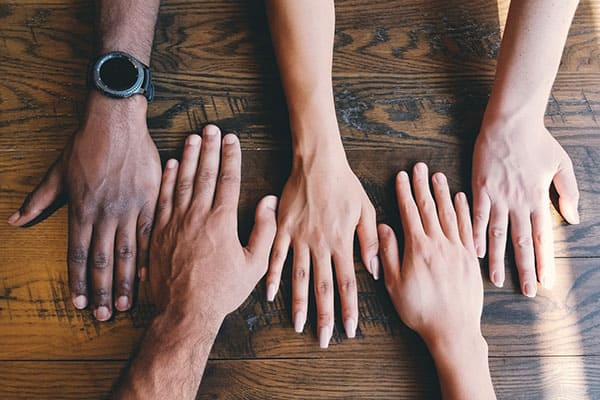
In these refugios, you can book them for the night. You get a bed. Oftentimes, you can get a private room. They have flush toilets. They will cook you a meal, and it’s not a basic meal. It’s a 4 or 5-course meal. It’s pretty crazy. We were there in shoulder season because we know that if we didn’t go in shoulder season, it would be super busy.
A lot of them were closed, so we didn’t get to go to a lot of them. Some of them were open and we were able to stop for lunch. We did stay at one at the end. It was probably one of the more fancy ones. I was blown away because if you stay at a backcountry cabin in Canada, you don’t get a private room at all. There’s usually a loft. Sometimes, there are mattresses, but a lot of times, you’re sleeping on your own Therm-A-Rest that you hike up there. You’re going to be sleeping on the floor with a bunch of strangers in one room.
There are no flush toilets. You are pooping in an outhouse. It’s also not catered so you have to hike at your own food. There will be a kitchen and pots and pans, but you’ll have to bring in things like fuel and all your food. There might be a caretaker up there, but they’re there to restock the toilet paper and make sure that people don’t destroy the place. It is a very different scene. We booked this one place. We got a private room with a private shower. It was very nice. We got a five-course meal, breakfast, flush toilets, and Wi-Fi, so I was like, “What is this amazingness?” It was great. We loved it.
When we go back to Italy, because we will 100% go back, we are going to go back to the Dolomites. The rest of Italy, I loved it and it was great, but honestly, I’m good. I want to be in the mountains. The cool thing about Italy is you can get into this alpine and these crazy remote areas so easily and then stay at these refugios.
We’ve been looking at a multi-day track, maybe a 12 or 14-day hike, where we go from refugio to refugio because it would be affordable. The fancy place we stayed in was $100 each night. That was our room, our five-course dinner, and our breakfast. It was a very good value. A lot of them might be a little bit cheaper because they’re a little bit less fancy.
You can go from refugio to refugio, which is pretty amazing because you don’t need to carry food, bedding, a camp stove, or anything like that. You probably don’t even need to carry lunch because there are so many of them that you can stop at for lunch. You wouldn’t be carrying a lot of weight. You could go on this twelve-day trip. That’s something that we are thinking about doing in the future.
Many people were like, “You’re not relaxing on your vacation.” I’m a bit of a different breed of a human because I’m not someone who goes on vacation to relax physically. I get a lot of rest in my everyday life. I work from home. I work five hours a day or sometimes less. I have a very comfortable house. It’s quiet. I’m not someone who wants to go on vacation and sit around. It’s not how I roll. When I go on a trip, I need an activity and an objective. It’s how I work.
I don’t need physical rest on vacation, but what I do need on vacation is mental rest. I run a business. I have a team. I’m constantly making decisions and problem-solving. That’s what I need a break from. I got that because Ryan, my boyfriend, did everything. He planned the entire trip. A lot of the times along the way, I didn’t even know where we were going. I didn’t even care. I wanted to go with the flow. He planned the trip, booked all the accommodation, drove the rental car, ordered all the food in his broken Italian, paid for everything, and handled all the money. I loved it. It was fantastic. I didn’t have to do anything. That was the rest that I needed. That was great. I loved it.
Intense Driving
Overall, everything was awesome. The thing that sucked in Italy the most was the driving. The driving was crazy. I’ve traveled to Asia. I’ve traveled to South America. South America is probably the sketchiest driving by far and way worse than Italy. At least in South America, everyone drives so chaotically and everyone’s on their horns. You know where everyone is. When everyone is chaotic, you go with the chaos.
In Italy, it was different because not everyone is chaotic, but half of the people are, it seems like. You’re always on edge because you never know when people are going to make a sketchy move. They tailgate so crazily, like 5 feet from your bumper. They drive super fast. They don’t use their blinkers. They’re all over the road. There seems to be a lot of distracted driving there. 4 or 5 different times, we watched people slowly drift off the road and almost drive off the road. One guy on the highway drifted off the road and hit the guardrail. He bumped off the guardrail and almost spun out right in front of us going 100 kilometers an hour. It was ridiculous.
I remember our last day in Italy, which was the worst day by far. It was a travel day. We were driving from the Dolomites back to Milan to catch our flight. It was supposed to be a two-and-a-half-hour drive. It took us almost six hours. The whole time, I had my hand on the bar. I was tensed up the whole time. The fact that we didn’t get into an accident was a miracle.
Ryan’s a great driver. He’s offensive and defensive. He’s good, but every time we pass someone, we didn’t know if they were going to cut us off. It was so stressful that when we come back to Italy, we are not driving. I will never rent a car in Italy again. It is such a contrast because they’re so leisurely for the rest of their life. They relax and chill. The vibes are very stress-free, but they’re driving is intense. That’s all I have to say about that. We’re excited to go back.
Earning While On Vacation
The best part about this is I was able to be on three weeks of vacation and make $45,000 while I was gone. The reason I’m able to do that is because I have evergreen funnels set up. Automated webinars sell my program, so I’m not involved in that. I’m not doing sales calls. Did I chat with people in direct messages? Yes. I still chatted with people in direct messages, which was easy to do there because their cell service is everywhere, even in the mountains. It’s mindblowing.
I was able to help people make their purchase decisions. I was also on the tail end of a launch. We had our summit, and then I launched. Part of my launch was when I was in Italy. I was still able to make the same amount of money that I would normally make while I was gone, which was amazing. That is something I want for you, too. The intention of me having this show and what I do is so that you can have something like this set up so that you can go on vacation and still be making money.
Eating Gluten In Italy
I posed the question to my Instagram following. I let them know I was going to be recording this personal episode about personal questions they have for me. A bunch of people asked, “How was it to eat gluten again?” If you don’t know, I’ve been gluten-free for probably about a decade. In Italy, I ate gluten for three meals a day. I went all in. I ate all the gluten. Honestly, it was fine.
I did have one day where something happened. I’m still not exactly sure what it is, but it was about 5 or 6 in and we ate this gelato. As soon as I ate that gelato, I felt this pain in my gut. Something was off. I had to go to the bathroom. It didn’t feel good. The next day, I felt like I was going to crap my pants the whole day. That night, I had this intense stomach pain so much that the next morning, I went to the pharmacy and got some stomach solution that tasted like clay, like sodium bicarbonate or something. You guys know what I’m talking about. That seemed to clear it up.
From then on, I was fine but at the time, I was worried. I was like, “Is this from the gluten?” I feel like it’s from the gelato because Ryan had the exact same thing happen to him. Right after, his gut felt off. I’m like, “Let’s be honest. It’s probably the gluten.” That was a little bit stressful because we were in Tuscany and there didn’t seem to be a lot of gluten-free options. We don’t speak Italian so we can’t always read the menu.
I took a few days off where I was not eating it, but then, it was so hard because Ryan was eating all the things. Everything looked amazing. I started eating it again and I was fine. I can’t say that I was living my best bowel movement life because I wasn’t, but it was fine. I was maybe a little bit bummed up, but it was fine. The question I was asking myself leading up to Italy was, “Am I still gluten intolerant?”
I went gluten-free years ago when I was having all these issues with my health and it served me. I kept on with it and made it a part of my identity. I’d never challenged it. In the two months leading up to Italy, I stopped being so careful about it. When I go out to a restaurant, I wasn’t worried if there was soy sauce in something or maybe there was a bit of binder, like a bit of flour in a burger or something like that. I wasn’t eating bread or anything full-on but I wasn’t worrying about the small pieces of gluten. I felt fine.
I found that interesting. It was nice to eat all the bread. I’m so happy to be home and back on my regular diet because it was a complete flip in the way that I eat. I typically eat high protein, low carb. I was eating high-carb, low-protein because the meat portions aren’t very big in Italy. Typically, if you order a meat dish, it tends to be pretty expensive, so I was eating a lot of pizza, pasta, dumplings, and that sort of thing. It honestly felt fine.
When we got back to Canada and we were driving home, we stopped in Canmore in Alberta and had breakfast. I got toast with my breakfast. I didn’t even think about it and ate it. As soon as I ate that, I got a pretty bad stomach cramp. I felt like, “I might need to have an emergency poo,” but then I was fine. Now that I’m back, I am thinking of maybe bringing some back into my diet, not in a way that I eat it consistently.
Personally, I don’t think bread is going to serve me. I don’t think eating gluten all the time is going to serve me. Typically, when I do eat bready things like pasta or bread, it’s for a treat. If I’m at a restaurant or I’m treating myself, which is very rare, maybe once a month or a couple of times a month, maybe I’ll get the bread.
You guys maybe have heard me talk about @GlucoseGoddess, my favorite Instagram account, which I’m going to talk about in a second here. I’ve been on this blood sugar-balancing journey. What she put up on her Instagram not that long ago was a comparison between gluten-free bread and regular bread. Regular bread spikes your blood sugar a lot less because gluten is high in protein. It slows the glucose response. I thought that was really interesting.
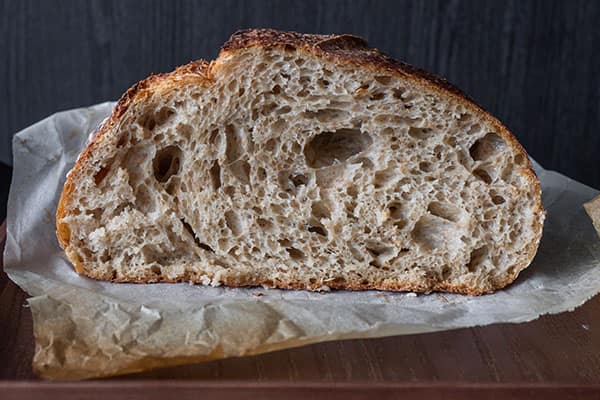
I’m thinking of perhaps making my own sourdough. There’s a French bakery in town so perhaps I am going there. There is an Italian store in the next town over. I was thinking about maybe getting some Italian flour and some Italian pasta, and seeing how I tolerate it. What’s interesting from what I’ve heard and what I can tell you is that it felt different in Canada eating gluten or not eating gluten. If I had pizza and pasta in a meal, I would feel bloated. If I was eating gluten-free, I would feel bloated and heavy. Before I ate gluten-free, if I did that, I would feel heavy and bloated. I was able to eat a full pizza to myself and pasta and it was a light feeling.
There is something about the Italian wheat that is different, which is interesting. I haven’t done any research on this, so feel free to correct me. I’ve heard that 80% or 90% of the flour used in Italy comes from Canada. I read online that the type of flour they use in Italy typically contains less gluten than the stuff in North America. If they’re importing the majority of their flour from North America, then that wouldn’t be true.
Despite that, it still felt different. Ryan said the same thing, and he eats gluten. He’s like, “If I go out and eat a piece of bread or pizza or I get a pizza or pasta at a restaurant, it’s good. I’m not sick from it, but I feel heavy. It weighs me down.” He’s like, “Here, it doesn’t. It feels so light.” There’s something different about it.
I don’t know what that is now that I’m learning that maybe the flour used over there is the same as here, but it’s different. I do wonder if it’s glyphosate. I know in North America, they often douse their wheat with glyphosate for three days before they harvest because it increases yield whereas what I’ve read is that glyphosate is banned in many European countries. Perhaps it’s that. I don’t know. It’s really interesting.
Some people link it to stress, but in my regular life, I’m not that stressed. I operate at a low level of stress because I run my own business and spend lots of time in nature. I like my life. I don’t have kids. My life is pretty cruisy, so I don’t link it to that. I’m not sure, but I am going to try eating the gluten a little bit more here and see how it goes. I would like to use my continuous glucose monitor to compare regular bread versus gluten-free. Generally, it was fine. I’m glad that it worked out well for me because the food in Italy was unbelievable. I’m glad I got to fully experience that. We’ll see how it goes. I’ll update you.
H. Pylori Protocol
When I posed the question to Instagram of what people were wondering about, another one that I got a bunch of was an update on my H. pylori protocol. I’ve talked a little bit on the show about my struggle with getting rid of H. pylori. I’ve had it for about three years. It’s been a struggle, to put it lightly. It has been hard to get rid of, which is not an uncommon story.
When I started in functional health in 2014, it was quite easy to get rid of H. pylori. You’d put people on a 60-day protocol with three products and almost always, it would go away when we retested. It has shape-shifted and adapted. It’s very resistant. A lot of my friends who are health coaches and functional health practitioners are having a hard time getting rid of it. That’s been my experience.
Right before I left for Italy, I was like, “I’m done with this. I want to get rid of this,” so I decided to hit it with a carpet bomb. I did a whole bunch of different things. I went on PubMed, looked for every single alternative therapy that had research behind it, and did all of it. I spent $1,000. It was crazy, but you got to do what you got to do.
I did this intense protocol that I didn’t react to very well, but I took it as a good thing. I was like, “Maybe I’m getting a lot of die off.” I had a bad experience at the beginning of the protocol. It made me quite sick, and then I finished it. I’m curious to see if I still have it. I’m going to wait probably about 1 month to 6 weeks to retest. I’m going to do some gut-rebuilding stuff.
The worry I have is that I was finishing the protocol in Italy. In hindsight, maybe it wasn’t the best choice, but I didn’t want to wait until I got back. My compliance with my taking my supplements in Italy was maybe about 70% whereas usually, I’m around 90%. It might even be a little bit less. It was probably about 70%. I’m wondering. I feel better. My digestion feels better. Did eating the gluten set me back? Maybe. I don’t know. I’ll keep you guys updated. I am going to be retesting. I’m going to do another GI-MAP in about 4 to 6 weeks and see where things are at. We’ll see what happens there.
In terms of my health, overall, I am feeling good. Leading up to Italy, I was feeling so amazing. I credit this to being diligent about tracking my blood sugar. This is maybe going to be a little bit polarizing, also weighing and tracking my macros and my calories. I know so many people in the health world are so against calorie counting, but this helped me.
I got turned onto a continuous glucose monitor by my good friend Tara Thorne. She’s a health coach. She was thinking about bringing these into her practice and giving them to her clients. I thought, “That’s interesting,” so I bought some. I wore one for about 90 days and learned a lot. I learned that I have poor blood sugar metabolism and I am not super tolerant to carbs. My body was struggling even to process things like potatoes and sweet potatoes.
Ultimately, what happened is I went low carb. I did that for a while. I was eating probably a moderately high-carb diet. I went super low where I was eating virtually no carbs. I was probably eating closer to I don’t want to say keto because I eat quite a bit of protein. I thought, “I need to test my amounts.” What I’ve learned from that is that I can only tolerate about 70 grams to 90 grams of carbohydrates a day, which is on the lower side, but I honestly feel good about it. I feel fine. What I notice is if I eat more than about 25 to 30 grams of carbs in a meal, I get a bad spike. My spike doesn’t go up and come down. It stays high sometimes for hours. It is sometimes for 3 or 4 hours.
From getting that data from my CGM, I decided to do an advanced functional glucose course which I took from Dr. Bryan Walsh. I love it. I took his advanced glucose course, and that was fascinating. For anyone who is working with blood sugar in their practice, if you have clients who are trying to lose weight or energy or have diabetes, I highly recommend that course because he disputes the whole role of insulin. He shows you that a lot of blood sugar problems don’t have anything to do with insulin.
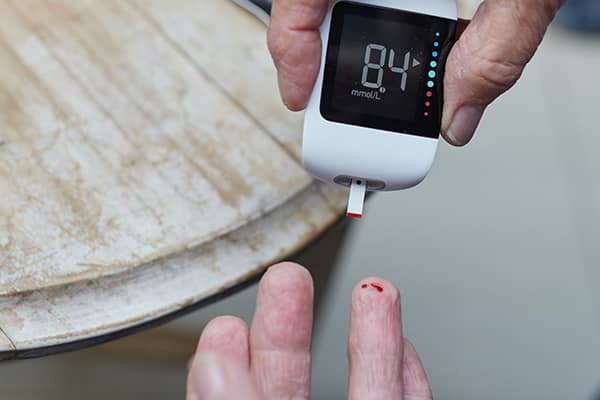
What I was able to learn through my blood markers was that I don’t have any issues with insulin, but I do have an issue with GLP-1. GLP-1 is a gut hormone. It’s an increase in gut hormones. What it does is it stimulates the first phase of insulin response. There are two phases of your insulin response. The first phase deals with preformed insulin. We already have this insulin made. It’s already made. It’s ready to go. Within about 5 to 10 minutes of you chewing your food, the first phase gets stimulated. That pre-formed insulin goes into the bloodstream. It’s fifteen minutes. I might be a little bit wrong there.
After the first phase, it’s very short. Once that’s done, then we move into the second phase, which is your body making insulin on demand. When you don’t make GLP-1 in the gut, which, for me, it’s probably because I’ve had a lot of gut issues, then you can be lacking this first phase insulin response. What that leads to is your insulin being higher for longer, which was the issue I was having. I was able to determine that by looking at four different blood markers. I was able to rule out high insulin and low insulin.
I was able to rule out issues with glucagon, which is the opposite of insulin. I was able to narrow it down that I have this issue with GLP-1. It is fascinating. If you guys are familiar with semaglutide, which is in Ozempic, which is that popular new weight loss drug that everyone’s talking about, it is helping people with Type 2 diabetes lose weight. I don’t know if Ozempic stimulates GLP-1 or if it is GLP-1, but it’s stimulating that first-phase insulin response.
When people have Type 2 diabetes, generally, they are lacking that first-phase insulin response. The interesting thing about this is if you are lacking your first phase insulin response, that is the earliest warning sign of Type 2 diabetes. Sometimes, it is twenty years in advance. If you’re working with blood sugar in your clients, I highly recommend this course because it’s an interesting marker.
I’m sidetracked here. I don’t remember what I was originally talking about, but what I learned is that I was lacking this GLP-1. It could be due to H. pylori. In PubMed, I’ve found some connections between H. pylori and GLP-1. I’ve also found some research showing that when people get rid of H. pylori, it re-regulates their carbohydrate metabolism. I do wonder if H. pylori is playing a role in that as well.
I started taking natural supplements that stimulate GLP-1. There are lots of them that will do them. I’ve been focusing on berberine. I try to take berberine about 1 hour to 1 hour and a half before every meal. That has carbohydrate in it and it does improve my glucose response. I’ve been doing that. That’s been helping stabilize me with my energy. I’ve been able to find where that carbohydrate tolerance is for me, and that was feeling really good.
Another friend of mine is Claudia. If you’re an HCA student, you’ll know Claudia because she’s our coach inside HCA. She has her own health practice. She works with women in their perimenopause stage of life. A lot of them want to lose weight. She was fiddling around with macro tracking and calorie tracking. She was like, “I really want to be able to help these women lose weight.”
Doing the testing and getting them on a healthy diet isn’t always enough, so she was tracking all those things. I love tracking. I love data. I was like, “It’s interesting that you’re doing that. I’d like to track it, too.” I started tracking my macros and started tracking my calories. I’ve never been a calorie counter, so I had no idea where I was at.
Weight is something I’ve struggled with a little bit. When I had my health issues starting back in 2012 and I was in the midst of that, I gained weight quickly. I’ve been an athlete my whole life. I’ve always been fit. I’ve always been the same weight. All through my 20s and early 30s, I was the same weight. When I had this health crash, I gained about maybe 25 to 30 pounds very quickly. It was overnight. Despite the fact that I was exercising, working in forestry, and didn’t change my diet, it came on quickly.
Even though I am much healthier and everything is better in terms of my health, my weight’s been stuck at about 20 or 30 pounds over my ideal. I’m really short, so it is a lot of weight. It’s something I’ve been self-conscious about. I have wanted to lose weight but I’ve been not trying because nothing has worked. I’ve tried all the things that you’re supposed to do and nothing has shifted it. It wasn’t something I was focused on because I have given up and accepted that my body wanted to be this heavier weight.
I decided, “It’d be interesting to see where my calories are at because maybe I am overeating or maybe I’m not eating enough protein.” By starting to track my macros, I realized that I was undereating protein. I’m a huge proponent of high-protein diets. I harp on it to my students all the time to tell their clients to eat more protein. I started eating 150 grams of protein each and every day. I was probably eating about 100 to 120.
I wanted to make sure I knew, so I started weighing. I went and bought myself a little food scale and started weighing all my food. I’m like, “I want to get an idea of where my calories are at and where my protein is at.” I quickly learned that I was not eating as much protein as I thought I was. What I also learned, and this was shocking because I thought it was the opposite, was that I was severely undereating calories. That was a huge shock because I didn’t feel like I was starving myself. I always felt satiated. I felt full. I felt like I was probably overeating. This was interesting for me.
My basal, meaning that with no exercise, this is the amount of calories that I need for regular everyday functions, is about 1,450 calories. What I learned is that on a lot of days, I was eating about 1,200 calories a day. It’s crazy because I’m incredibly active. I do an intense strength training workout three times a week. I mountain bike. I hike. I ski. I am active. I walk a lot, so I’m active usually six days a week. I was shocked by that.
What I learned was that fasting was probably doing me a disservice because I was fasting. I was eating two meals a day. What I learned is that the reason why I was probably eating 1,200 calories is that it’s hard to eat more than 600 calories in a meal when you’re eating whole foods. I quickly realized how stressful that probably was on my body. I was like, “Oh my God.”
When I did the calculation, my maintenance calories were 2,200 calories. That blows my mind because that’s a high amount of calories. I have a hard time eating 2,200 calories. I was like, “Okay,” because I do want to lose a bit of weight. I was able to see that I should be eating 1,750 calories a day. It was interesting because then, I was like, “I’m severely undereating calories. Maybe this is why I haven’t been able to lose the weight because my body is stressed out and in starvation mode.”
I upped my calories and started weighing all my food. It was fun, which I know sounds crazy. A lot of people are like, “I can’t believe you want to do that.” I loved it because I love data. I love knowing. That was fun for me. I started weighing for a few weeks and making sure I was eating 1,750 calories and I was eating my 150 grams of protein. I was eating about maybe 80 to 90 grams of carbs a day and then probably about 90 grams of fat. It is a little bit of a higher diet, but very high protein.
I instantly noticed a shift in my energy. I was decently energetic before, but my energy got so good. I felt strong. I started noticing more muscle development. I never weigh myself. I weigh myself maybe once a year. I weighed myself before the diet because I was interested. I felt leaner. I was like, “I feel like something’s different. My clothes are fitting a little bit better.” I got on the balancing scale, and within those two weeks, I had lost 7 pounds. I was like, “That’s so fascinating.” Isn’t that interesting? I was like, “This is so great because I needed to eat more food and protein.”
It took me a while. It was hard for me to get 1,750 calories because I was eating so much of it as meat and protein. It was quite hard for me to get to that. I struggled a bit, but I’m finding it easier. I found that so fascinating. It’s interesting how simple it can be. I wasn’t eating enough, and that’s the reason why I wasn’t hitting my goals with my energy or my weight. I needed to eat more protein.
Unfortunately, I did gain back all of what I lost in Italy, but that’s to be expected. I flipped the macros on their head and went from high protein, low carb to high carb, high fat, and low protein. It was very different. It’s not shocking, but mostly, I find it fascinating. It’s been an interesting experiment. Now that I am back, I am right back on the high-protein diet. I feel great. I love it.
I’m going to go back to my strength training exercise. I work out three days a week with a personal trainer and we focus on strength. I am excited to get back on that. That diet I feel my best on. Even though it was so fun to eat all the bread, pasta, carbs, and cheese in Italy, in the end, I prefer the high protein, lower carb diet. I feel better about it. It feels good. I feel strongly about it. I love food. I have to say that.
What am I going to be doing moving forward? I haven’t been wearing a CGM, but I would like to put another one on. Mostly, I want to test between gluten-free bread and regular bread and see what happens. I’m going to continue to track my macros and calories until I get a good sense of what everything is and I feel good without the weighing. I know that sounds crazy, but I love it. I’m going to retest my H. pylori in about 4 to 6 weeks and see where we’re at. I am excited about that.
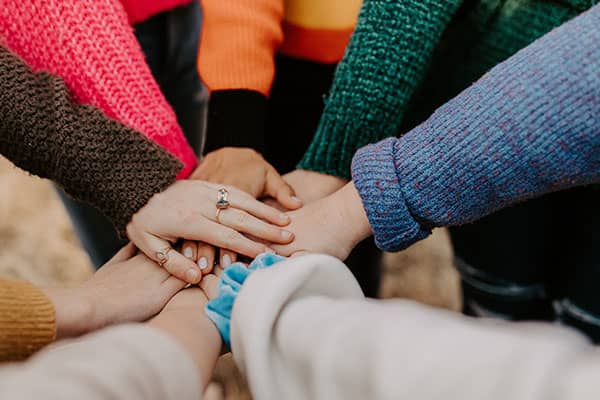
Those are the main things that I’m working on. I’ll probably retest and do full blood chemistry at the end of summer. I usually like to do one twice a year. I am interested to see if eating this diet has any impact on my thyroid markers and cholesterol markers because those have always been a little bit out of range. We’ll see. Overall, I feel great. It’s amazing to be able to say that because I felt so horrible and so crappy for so long for seven years. I thought I would never get out of that. I thought that was my life. It was a struggle. Sometimes, I felt like it maybe wasn’t even worth living. I never thought I’d get to this point.
For those of you in the audience who are dealing with a health issue that’s chronic and persistent, know that you can get there. It could take time but don’t give up. I’m so glad I didn’t give up because I have the energy to do all the things that I want to do, things that were so hard for me to do during those years of sickness. To have this energy, clarity, and endurance back and to feel strong, I am so happy to be here.
As always, we are a work in progress. I’m not perfect. I’ll always be optimizing and working on my health and trying to make things better. I will keep you guys updated. If you have any questions about this episode, feel free to reach out to me on Instagram. My handle is @KendraPerryInc. I’m available. I will answer your DM. I’d love to chat with you. If you like this episode and you want to give me a little bit of love, I would love it if you would give me a five-star review on iTunes. You go to RateThisPodcast.com/Wealthy. Go do it. Thanks. I appreciate you tuning in with me. I will see you next time at the same time and same place where I help you become wealthy AF.
Important Links
- Temperature Minimum – Past episode on the Huberman Lab podcast
- All About Glucose Course
- @GlucoseGoddess – Instagram
- @KendraPerryInc – Instagram
- RateThisPodcast.com/Wealthy
- iTunes – The Wealthy Coach
- Italy itinerary, hotels & restaurants
- Temperature Min Jet Lag Protocol
- Continuous Blood Sugar Monitor (Canada)
- H. pylori Toxaprevent Protocol

